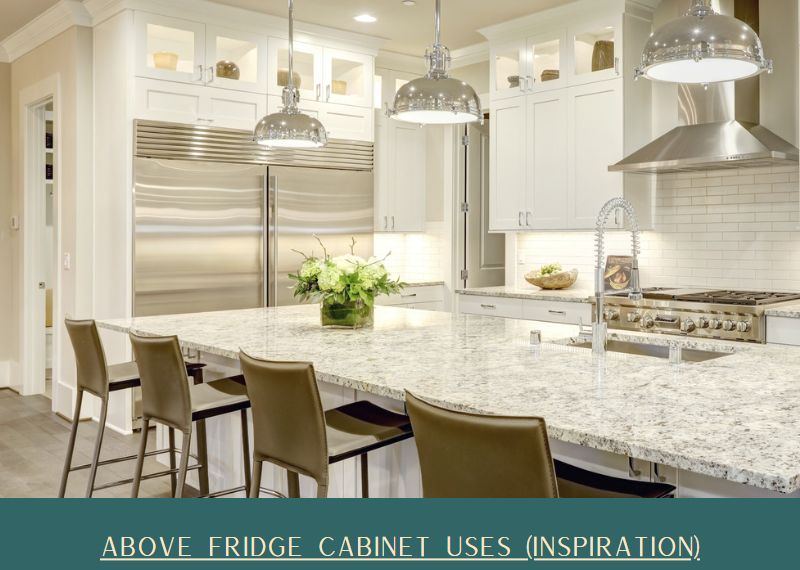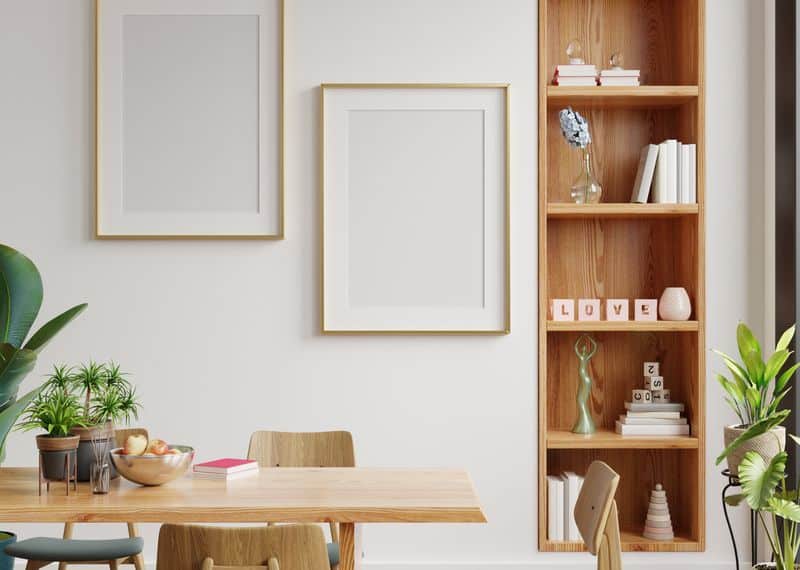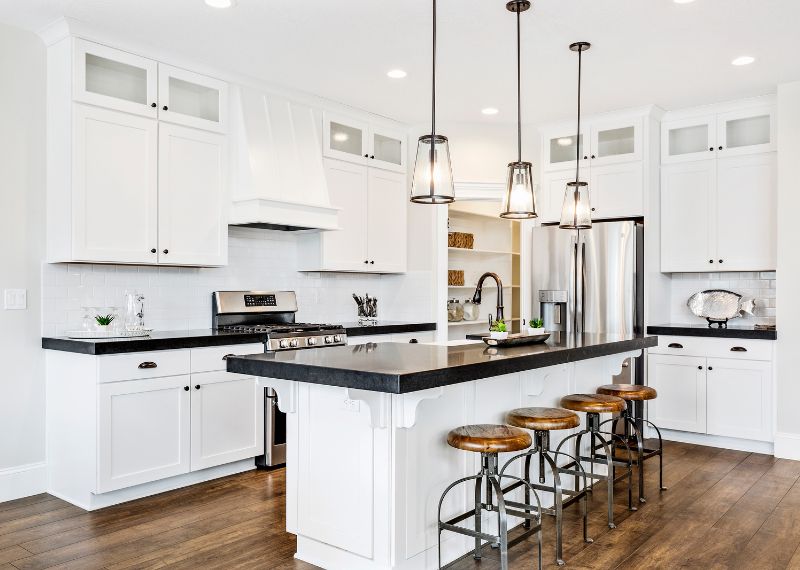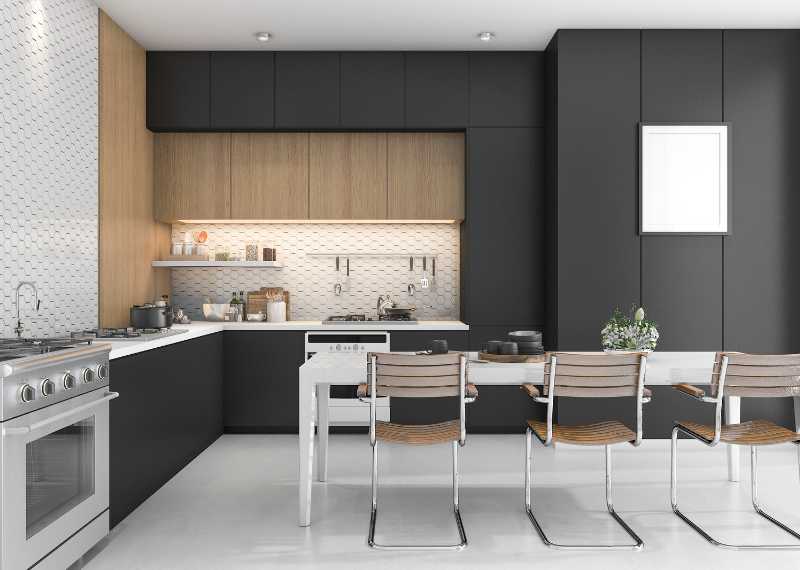Are you looking to freshen up your kitchen cabinets with a fresh coat of paint? Painting cabinets is a budget-friendly way to give your kitchen cabinets a new and modern look. However, you’ll need the right tools for the job to achieve a professional-looking finish.
This blog post discusses the best paint brush for cabinets and other tips to help you achieve a flawless finish.
Using a high-quality paint brush with fine bristles is essential when painting cabinets. Look for a brush with synthetic bristles that are durable, easy to clean, and suitable for oil- and water-based paints. A 2-inch angled brush is a good choice as it can easily reach tight corners and edges.
Some popular brands of cabinet synthetic brushes include Wooster, Benjamin Moore, and Purdy paint brushes. Using a high-quality brush will help you achieve a smooth and even finish that looks professional.
The Best Paint Brushes For a Smoother Finish
The Pro Grade Paint Brushes Choice
Best suited for value affordability without compromising too much on quality.
It is an excellent option for general painting tasks requiring a decent brush but at a more reasonable price point. This set is handy for those who dislike overpaying for brushes while desiring satisfactory performance.
The Paint Brush Set offers great value with a mix of angled brushes compared to pricier brushes available at other stores.
Pros:
- Excellent Value: Users have praised the Pro Grade Paint Brushes set for its affordability and value for money. It provides a cost-effective solution by offering five brushes at a price similar to what a single brush would cost in some stores.
- Comparable Performance: Many users have found the performance of these brushes to be on par with more expensive options available at retail stores. They have reported similar quality and effectiveness compared to overpriced brushes, making this set a worthy alternative.
Cons:
- Durability: Some users have expressed concerns about the durability of the brushes. While they offer good value for the price, they may not hold up as well over time or with heavy use compared to higher-end brushes.
Performance and Affordability Combined: Wooster Brush 5229 Silver Tip Variety
Ideal for Smooth and Flawless Painting
The Wooster Brush 5229 Silver Tip Variety set offers a price-performance balance that many users find appealing.
Pros:
- Great Value: Users appreciate the combination of performance and affordability provided by the Wooster Brush 5229 Silver Tip Variety set. It offers good quality brushes at a reasonable price point, making it an attractive option for budget-conscious buyers.
- Performance: The brushes in this set have garnered positive feedback for their performance. Users have noticed fewer brush strokes and commend the lack of bristle shedding, eliminating the need to pick out stray hairs from the paint.
Cons:
- Lengthy Handles: Some users have noted that the brushes’ handles are an inch too long for their liking. While this may be a subjective preference, it could affect comfort and control during use.
Complete and Reliable: Purdy 14C811000 Premium 6-Piece Kit
Perfect for Large Home Painting Projects with Precision and Durability
The Purdy 14C811000 Premium 6-Piece Kit is a comprehensive painting set that claims to deliver exceptional performance.
Pros:
- Versatile and Complete Kit: The 6-piece kit offers a comprehensive set of tools, including rollers, brushes, and a tray. This provides everything you need to tackle various painting projects in your home.
- Efficient Paint Holding: Users have praised the roller’s ability to hold a substantial amount of paint. This feature saves time and effort as you can cover larger areas without frequent refills.
- Great for Trim Work: The included brush has received positive feedback for its performance on trim. Its design and bristles allow for precise and clean cuts, enhancing the overall finish of your project.
- Durability: Many users have shared their positive experiences with Purdy products, noting that the brush has remained in excellent condition even after extended use. This indicates the brand’s reputation for durability and longevity.
Cons:
- Price: The premium quality of the Purdy 14C811000 kit comes with a higher price tag than other painting kits on the market. While the investment may be worthwhile for professionals or frequent painters, there may be more cost-effective options for occasional or budget-conscious users.
Wooster Brush Q3211-2 Shortcut Angle Sash Paintbrush
Perfect for Precision: Excel in Cabinets, Trim, and Intricate Surfaces
The Wooster Brush Q3211-2 Shortcut Angle Sash Paintbrush is a handy tool that can assist you in tackling those hard-to-reach corners when painting cabinets.
Pros:
- Perfect Size: The 2-inch size of this brush makes it an ideal choice for intricate work, such as painting trim and reaching tight corners. It provides excellent control and precision, allowing you to achieve clean and professional-looking results.
- Comfortable Grip: Many users find the brush’s design ergonomic and comfortable to hold. The handle fits nicely in the hand, making long painting sessions less fatiguing.
Cons:
- Limited Versatility: While the brush excels at reaching tricky corners and performing detailed work, its small size may not suit larger surfaces. You may need to switch to a larger brush or a different tool altogether for broader areas.
Buying Guide
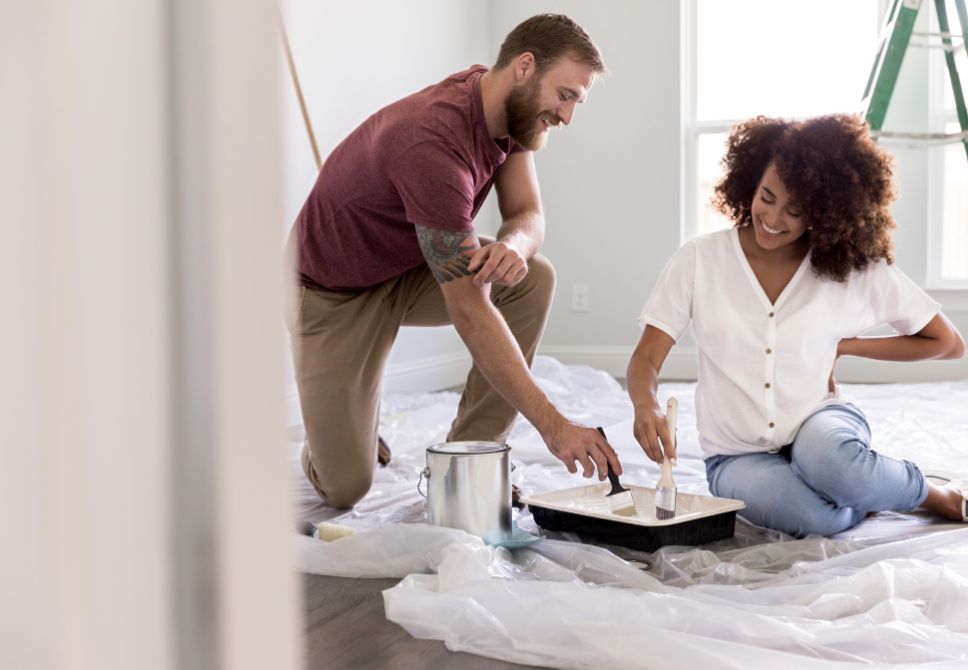
While paintbrushes are commonly used, there are several factors you must consider to ensure the best outcome for your project. We’ll explore the essential steps and techniques to paint your kitchen cabinets and important considerations to achieve a professional finish.
Brush Type
Selecting the right brush type is crucial for a smooth finish. Look for pro-grade paint brushes specifically designed for painting cabinets or furniture. Synthetic bristle brushes made from nylon or polyester are highly recommended due to their proven durability and ability to create even finishes. Avoid using natural bristle brushes, which may leave behind brush marks or streaks.
Brush Size
Choosing the appropriate brush size depends on the scale of your cabinets and the level of detail you’re looking to achieve. Opt for a 2- or 2.5-inch brush for larger, flat areas. For smaller or intricate areas, such as corners and edges, use brushes in the 1- to 1.5-inch range. Using the right brush size ensures better control and precision during painting.
Brush Quality
Investing in high-quality paint brushes is essential for achieving professional results. Look for brushes with well-shaped bristles that are firmly attached to the handle. Cheaper brushes may shed bristles, resulting in an inferior finish.
Quality brushes provide better paint control and smoother application and reduce the chances of bristle marks or loose hairs marring your cabinets’ surface.
Additional Tools
While paintbrushes are essential, additional tools can help you achieve an impeccable finish. Consider using foam rollers for smooth surfaces and larger areas. Foam rollers apply the paint evenly, minimizing the appearance of brush marks.
Spray paint can be an option for larger projects, but they require professional expertise to use effectively. Choose the tools that suit the scale and intricacy of your project.
Surface Preparation
Proper surface preparation is crucial for a long-lasting and flawless paint finish. Before painting your cabinets, thoroughly clean them to remove grease, grime, and old finishes. Use a simple mix of mild soap and water to clean the surfaces, ensuring they are free from dirt and residue. Lightly sand the cabinets to create a better bond between the paint and the surface, allowing for a smoother result.
Paint Selection
Choosing the correct type of paint is equally important for a successful cabinet painting project. Opt for paints formulated explicitly for cabinets or furniture, as they are designed to withstand wear and tear and provide a durable finish.
While oil-based paints were traditionally popular, many water-based paints now offer excellent results and are easier to work with. Select a paint color that suits your preferences and the specific requirements of your kitchen cabinets.
In addition to a good brush, using an extension pole can make painting cabinets much easier and more comfortable. This will make it easier to reach high areas without straining your back or arms. It’s also an excellent tool for painting large surfaces and hard-to-reach places.
Choose the right length of extension pole for your needs, as too short or too long of a pole can also cause discomfort or difficulty in reaching certain areas.
Remember Not To Skip Prep Work!
Before you dive into the project, it’s essential to understand the best techniques and considerations for achieving a professional finish.
Quick Tip for Achieving a Flawless Finish on Cabinets:
- Remove all cabinet hardware and doors for easy access.
- Thoroughly clean surfaces with a degreaser solution to remove dirt, grime, or grease.
- Lightly sand to create a smooth base for paint adhesion.
- Apply a primer to enhance paint adhesion and prevent stains or tannins from bleeding.
- Use long, even strokes and work in small sections to avoid drips or brush marks.
- Apply two or three thin coats of paint, allowing sufficient drying time between each coat.
- Consider using a paint additive like Floetrol to reduce brush marks and ensure a smooth finish.
Keep reading for a more detailed action plan,
Step 1: Preparation Before you start painting, proper preparation is crucial for a successful outcome. This includes removing cabinet doors, drawers, and hardware, cleaning the surfaces thoroughly, and applying painter’s tape to protect surrounding areas.
Step 2: Lightly sanding the cabinet surfaces helps create a better surface for the paint to adhere to and removes any gloss or varnish. Remember to wipe away the dust with a tack or damp cloth afterward.
Step 3: Priming (if necessary) If your cabinets have a dark or heavily stained surface. Nevertheless, a primer is recommended if they are made of materials that don’t hold paint well. Priming improves adhesion and prevents stains from bleeding through the paint.
Step 4: Painting Choosing the right paint and tools is crucial for achieving a professional finish. Apply thin coats of paint, allowing sufficient drying time between each coat. Water-based latex paint is commonly used due to its quick drying time, while oil-based paint offers a durable finish but requires a longer drying time. Synthetic bristle brushes or foam rollers are ideal for cabinets.
Step 5: Finishing Touches After dry paint, inspect the cabinets for imperfections. Lightly sand any rough spots and wipe away the dust. Apply additional coats if needed, ensuring adequate drying time between each coat. Once the final coat is dry, reinstall the cabinet doors, drawers, and hardware.
Conclusion:
Painting kitchen cabinets can be a rewarding DIY project that brings new life into your kitchen. Painting cabinets will give your kitchen a new look.
Happy painting! Using the right tools and techniques, you can achieve a professional-looking finish lasting for years. Remember to choose a high-quality paintbrush with fine bristles, use an extension pole to reach high areas, and follow the proper technique for painting cabinets.
FAQs
How Long Do Painted Cabinets Take To Dry?
The drying time for cabinet paint can vary depending on several factors, such as the paint used, environmental conditions, and the thickness of the paint application. Here are some general guidelines:
Water-based Latex Paint:
- Water-based latex paint is commonly used for cabinet painting due to its quick drying time. Typically, it dries to the touch within 1-2 hours. However, it’s important to note that the paint may feel dry, requiring additional curing time to harden and fully cure. Waiting at least 24 hours before handling or reinstalling cabinet doors and hardware is safer.
Oil-based Paint:
- Oil-based paints have a longer drying time compared to latex paints. They can take 6 to 8 hours to dry to the touch. Oil-based paints require additional curing time, usually around 24 to 48 hours, like water-based paints, before handling or reassembling cabinets.
Remember that drying times can be influenced by humidity, temperature, ventilation, and the thickness of the paint layers. Higher humidity and cooler temperatures can prolong drying times, while warm and well-ventilated environments expedite the process. Always refer to the paint manufacturer’s instructions for proper drying and curing times.
Is it better to paint cabinets with a brush or sprayer?
Brushing lets painters apply color to the cabinet surface only to waste any remaining brush space after the painting. Spraying the paint ionizes it, causing it to inevitably disappear from the water, resulting in the paint that was in the tubing getting into waste.
How do I get a smooth finish when painting cabinets?
Use 300-400 gr. gritting for the finishing coat of paint to smooth down the cabinet surface. Finer sandpaper removes the stroke marks and brushes and creates an excellent surface to work with. Keep your brush clean and on a clean surface.






